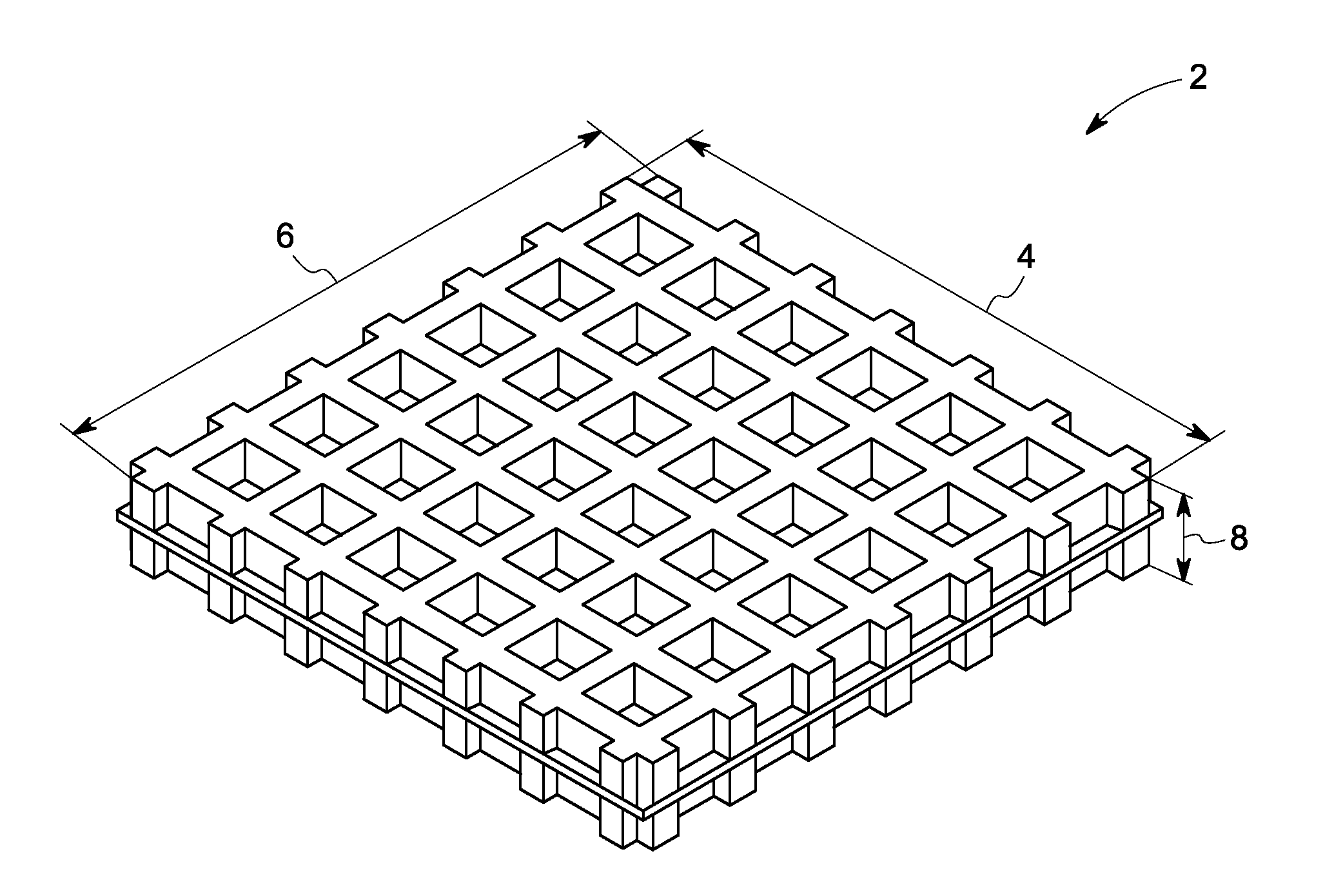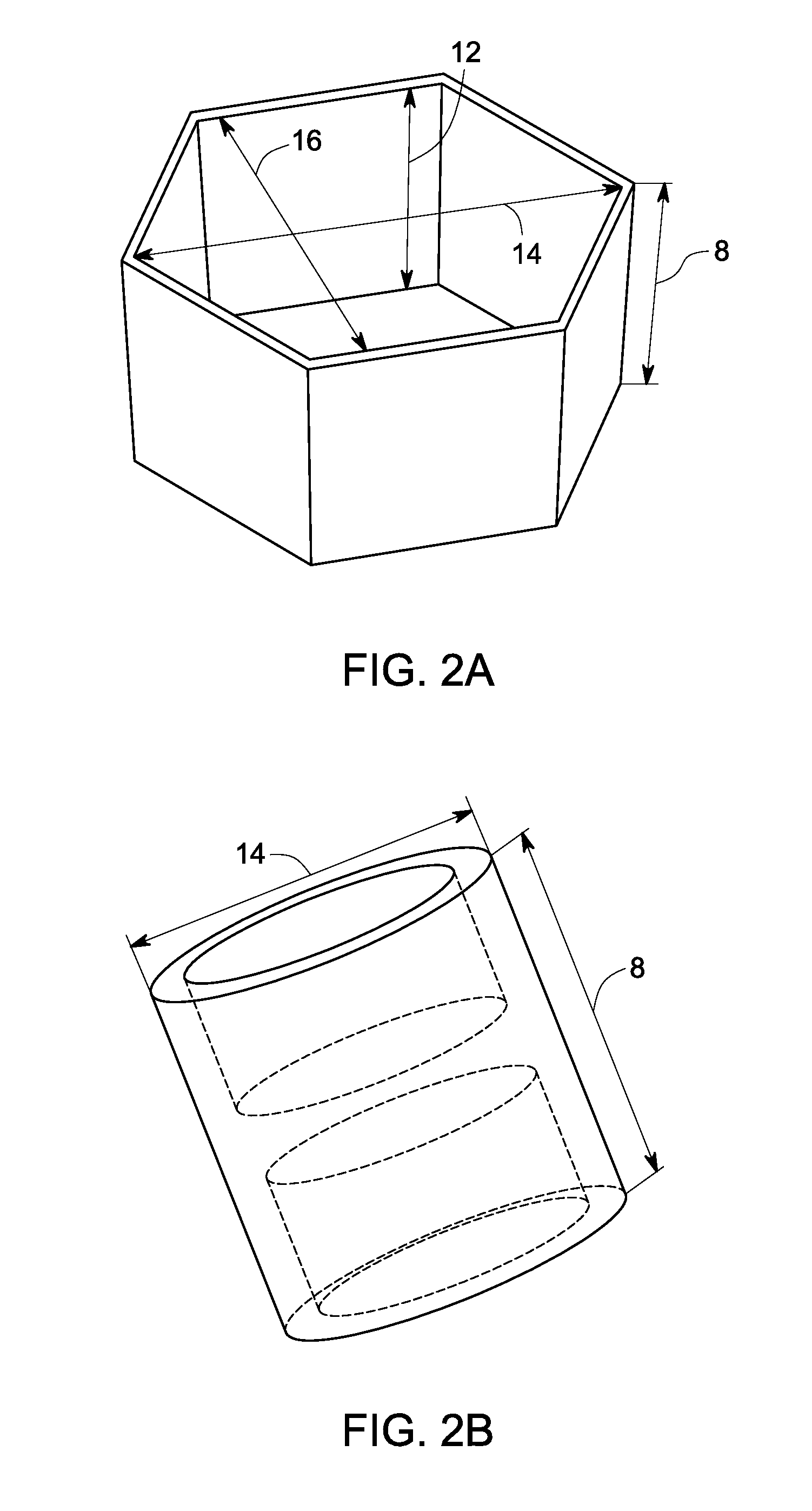Cell carrier, associated methods for making cell carrier and culturing cells using the same
a cell carrier and cell technology, applied in the field of cell carriers, can solve the problems of cell growth to high degree of flow-induced stress, cell limiting, and limited volumetric productivity
- Summary
- Abstract
- Description
- Claims
- Application Information
AI Technical Summary
Benefits of technology
Problems solved by technology
Method used
Image
Examples
example 1
Fabrication of Carrier for Growing Cells
[0059]Method of making a pattern master—A pattern-master was prepared by cutting grooves in a flat aluminum block using a dicing saw, which is outfitted with a resin-bonded diamond blade. A set of parallel grooves (the term being interchangeably used with ‘indentations’) was first cut in one direction, then a second set of parallel grooves was cut perpendicular to the first set of grooves. Finally, an effort was made to remove burrs that had formed in the first set of grooves during the cutting process. After the grooves were completed, the aluminum block was cleaned to remove any burrs on its surface. The pattern master determined the pattern geometry of the embossed carriers.
[0060]Formation of first generation mold from the pattern master—A first-generation mold was then made from the pattern-master using a fluorosilicone rubber, FSL 7661 (purchased from Momentive Performance Materials, Waterford, N.Y.). To produce the first-generation mold,...
example 2
Cell Culture on the Carrier and Subsequent Cell Release
[0067]Cell carriers—The carriers used for the following examples had a length and width of 5 mm, and a height of about 0.5 mm. The carriers comprised a plurality of structured indentations on each of the two outer surfaces. Each of the structured indentations had a major axis and minor axis of 0.45 mm each and a depth of 0.2 mm.
[0068]Cell culture—The carriers for cell culture were used to culture and release CHO (Chinese Hamster Ovary, ATCC), MDCK (Madin-Darby Canine Kidney Cells, ATCC), MRC-5 (human lung fibroblast, ATCC), and hMSCs (human mesenchymal stem cells) cells. These cells were routinely cultured on polystyrene surfaces using the following media: F-12K (EMEM, Invitrogen) and 10% FBS (fetal bovine serum); and Eagle's minimum essential medium (EMEM, Invitrogen) and 10% FBS supplemented with 100 U / mL penicillin—streptomycin (P / S, Invitrogen). Culture methods were performed at 37° C., in a humidified atmosphere of 5% CO2. ...
example 3
Characterization of Human Mesenchymal Stromal Cell (hMSC) Growth
[0073]hMSCs—The hMSCs used for this experiment were purchased from Lonza (Part number PT-2501) (Basel, Switzerland). The hMSCs were grown on the carrier (interchangeably used herein as ‘embossed carrier’) in stirred tank reactors (STR). FIG. 5A shows the growth of cells on day 1 (56, 58), day 4 (60, 62), day 7 (64, 66), and day 9 (68, 70), clearly indicating an increase in cell count over time in culture. Cells were observed to grow on both the top and the bottom of the indentations of the embossed carrier. FIG. 5A further illustrates higher cell growth in the bottoms of the indentations than the tops. Cells were grown on embossed cell carriers in two different types of spinner flasks, one from Corning, and one from Wheaton (Magna-Flex®). Cells were grown on tissue culture polystyrene (TCPS) in static medium as a positive control.
PUM
| Property | Measurement | Unit |
|---|---|---|
| height | aaaaa | aaaaa |
| height | aaaaa | aaaaa |
| height | aaaaa | aaaaa |
Abstract
Description
Claims
Application Information
 Login to View More
Login to View More - R&D
- Intellectual Property
- Life Sciences
- Materials
- Tech Scout
- Unparalleled Data Quality
- Higher Quality Content
- 60% Fewer Hallucinations
Browse by: Latest US Patents, China's latest patents, Technical Efficacy Thesaurus, Application Domain, Technology Topic, Popular Technical Reports.
© 2025 PatSnap. All rights reserved.Legal|Privacy policy|Modern Slavery Act Transparency Statement|Sitemap|About US| Contact US: help@patsnap.com



